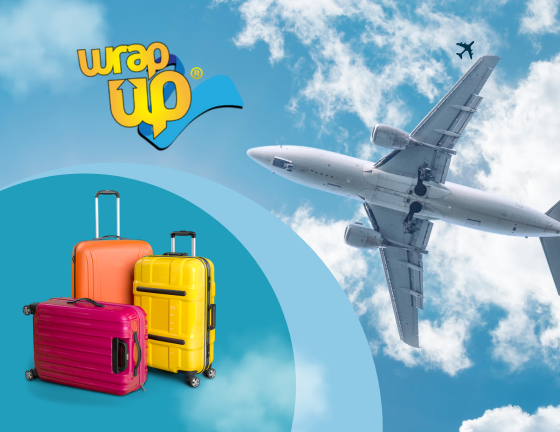Choosing the right suitcase can make the difference between a comfortable trip and an experience full of setbacks. For this reason, knowing the different types of suitcases is essential for any traveler. Whether you’re navigating international airports, hilly streets, or public transportation stations, the type of suitcase you choose will be your best ally or your worst enemy.
I vividly remember my trip from Miami to the West Coast of the United States. During that journey, I visited several cities like Los Angeles and San Francisco—each with its own style, climate, and transportation challenges. Navigating uneven streets and sidewalks made me think carefully about how to protect my belongings. As a result, this trip taught me the importance of choosing between hard-shell, semi-rigid, or soft luggage, as well as the convenience of having the right wheels for different terrains.
In this guide, I’ll show you the different types of suitcases, their features, and help you choose the one that best suits your travel style. Let’s get started!
Types of Suitcases: What Are the Options?
When it comes to choosing a suitcase, the first thing you need to know is that not all of them are the same. Suitcases are mainly classified by the structure of their materials, and each type has its own advantages and disadvantages depending on the kind of trip you’re planning. Here are the three main types:
- Hard-Shell Types of Suitcases: Maximum Protection
- 【Smooth & Easy Mobility】Sweetcrispy carry on luggage features a dual-wheel design for effortless movement, ensuring a sm…
- 【Spacious Storage Space】With spacious and practical storage, wet and dry mesh areas, X securing straps and expandable st…
- 【Lightweight & Durable】Crafted with ABS exterior material, this checked luggage is not only lightweight for easy handlin…
To begin with, hard-shell suitcases are known for their ability to provide superior protection. For example, brands typically use durable materials like polycarbonate or ABS, making them ideal for travelers carrying fragile items such as cameras, laptops, or delicate souvenirs.
Pros of Hard-Shell Types of Suitcases
- Greater protection against impacts and crushing.
- Water and moisture resistance.
Cons and Considerations Before Buying
- However, they can be heavier than other types of suitcases.
- They usually don’t have external pockets, limiting quick access to documents or accessories.
Before my trip to California, I seriously considered buying a hard-shell suitcase to protect my camera and other electronic devices. However, after analyzing the terrain I would be walking on (uneven sidewalks and streets), I opted for a lighter and more flexible option.
This is one of the most popular types of suitcases for international travel.
- Semi-Rigid Types of Suitcases
Offering a balance between protection and flexibility, semi-rigid suitcases combine the strength of a firm external structure with the adaptability of softer materials. Unlike hard-shell models, these suitcases aren’t completely rigid, which makes them easier to handle in tight spaces or crowded areas. Many designs also feature external pockets—ideal for keeping travel essentials like documents, chargers, or a light jacket within easy reach.
- Rolling travel bag designed to maximize available front cargo space.
- Can also double as airplane carry-on luggage
- Standard on RT Limited model
Advantages:
- Accessible external pockets.
- A combination of lightness and protection.
- Better yet, some models expand slightly to offer extra packing space.
Disadvantages:
- However, protection as hard-shell suitcases in case of crushing.
In the end, I decided on a semi-rigid suitcase. It was the best choice for easily moving through airports and transportation stations in cities like Los Angeles and San Francisco. Being able to store my charger in the external pockets and access it quickly was a huge relief.
- Soft-Sided Types of Suitcases
On the other hand, soft-sided suitcases are the lightest and often the most affordable option. Manufacturers use flexible materials like polyester or nylon, allowing them to expand and provide additional packing space.
- EXPANDABLE SUITCASE – The Medium Expandable Spinner expands for extra packing space and compresses back to its original …
- 360 SPINNER WHEELS – Move smoothly in any direction with four shock-absorbing spinner wheels that provide a quiet, fluid…
- SECURE ORGANIZATION – Efficiently store and organize your accessories with two strategically placed mesh-lid zip pockets…
Advantages:
- Extremely lightweight, making them easy to carry.
- In many cases, soft suitcases expand to create more room when you need it most.
Disadvantages:
- Less protection against impacts or pressure.
- As a result, soft-sided suitcases are more likely to tear or get damaged if heavy objects are placed on top of them.
While soft-sided suitcases are ideal for travelers who need extra space, in my case, I knew I would be carrying fragile items and navigating crowded airports. For that reason, I opted for a semi-rigid suitcase that offered a balance between protection and flexibility.
These are the lightest and most flexible types of suitcases available.
How Many Types of Suitcases and Luggage Are There?
In addition to the types of suitcases, it’s important to understand the different types of luggage. This classification is based on airline regulations and how the luggage is transported.
- Personal Item
For instance, this includes small backpacks, handbags, or laptop cases that you can carry with you in the airplane cabin. These items typically go under the seat in front of you.
- Carry-On Luggage
This is the classic cabin suitcase that you can bring on board with you. Generally, the size allowed by most airlines is 55 cm x 40 cm x 20 cm.
- Checked Luggage
This refers to the luggage that is checked in and stored in the airplane’s cargo hold. Large and heavy suitcases fall into this category.
What Size of Suitcases or Luggage Are Allowed on the Plane?
Most airlines allow a carry-on suitcase with dimensions of 55 cm x 40 cm x 20 cm. If your suitcase is larger, you’ll need to check it in and pay an additional fee.
Types of Suitcases with 2 or 4 Wheels
2-Wheel Suitcases:
- Slide forward and backward.
- More durable for uneven sidewalks or bumpy streets.
4-Wheel Suitcases (Spinner):
- Glide in all directions.
- Ideal for airports and smooth surfaces.
I opted for a 4-wheel suitcase, and it was the right choice. In crowded airports like Miami or Los Angeles, being able to move effortlessly in any direction was a huge advantage.
- The sets include a 20 inch carry-on luggage, 24 inch medium luggage, 28 inch large luggage and a 15 inch tote bag.
- Better than polyester material ,the luggage is made of 1680D oxford cloth. 210D nylon lining.
- Four multi-directional spinner wheels and telescopic handle for easy mobility.
How to Choose the Best Type of Suitcase for Your Trip
How to Choose the Best Type of Suitcase for Your Trip
Choosing the right suitcase can mean the difference between a smooth trip or a travel nightmare. My personal experience taught me that semi-rigid suitcases with 4 wheels offer the best balance between mobility and protection. Analyze your type of trip and specific needs before purchasing a suitcase.
Traveling to Multiple Cities
Use a semi-rigid suitcase with 4 wheels to adapt to any situation.
Carrying Fragile Items
Use a hard-shell suitcase to protect your belongings.
Traveling for a Few Days
Use a small carry-on suitcase to avoid check-in fees.
Long-Term Travel
Use a large or extra-large suitcase to ensure you have enough space.
Walking with Your Luggage
Choose a 2-wheel suitcase if the terrain is uneven, or a 4-wheel suitcase if you’ll be moving through airports and stations.
If you found this article helpful, share it with other travelers or tell us about your experience on our social media!
Each traveler has different needs, so explore various types of suitcases before making a purchase.
You may be interested in: Top 5 Mobile Apps for Frequent Travelers
✨ Bonus tip: Wraptogo offers at-home luggage wrapping—an added layer of protection for your suitcase before you even leave for the airport.
📦 Contact Wraptogo to schedule your luggage wrap
💬 Chat with us on WhatsApp for travel tips and protection services.
Hi, I’m Emerson Luzardo, founder of Luzarcan Group Inc., the parent company of WrapToGo and WrapUpShop. I’m a coach, speaker, and facilitator in Neuro-Linguistic Programming (NLP), with a focus on neuroscience and human behavior. Through my projects, I aim to transform the way individuals and businesses connect with their goals, their brand, and their environment.
Based in Miami, I combine my business experience with applied neuroscience knowledge, helping others enhance their skills, overcome obstacles, and achieve extraordinary results. I also share insights, lessons, and strategies on my social media platforms.
Thank you for reading and joining me on this journey of growth and transformation.

















































Recent Comments